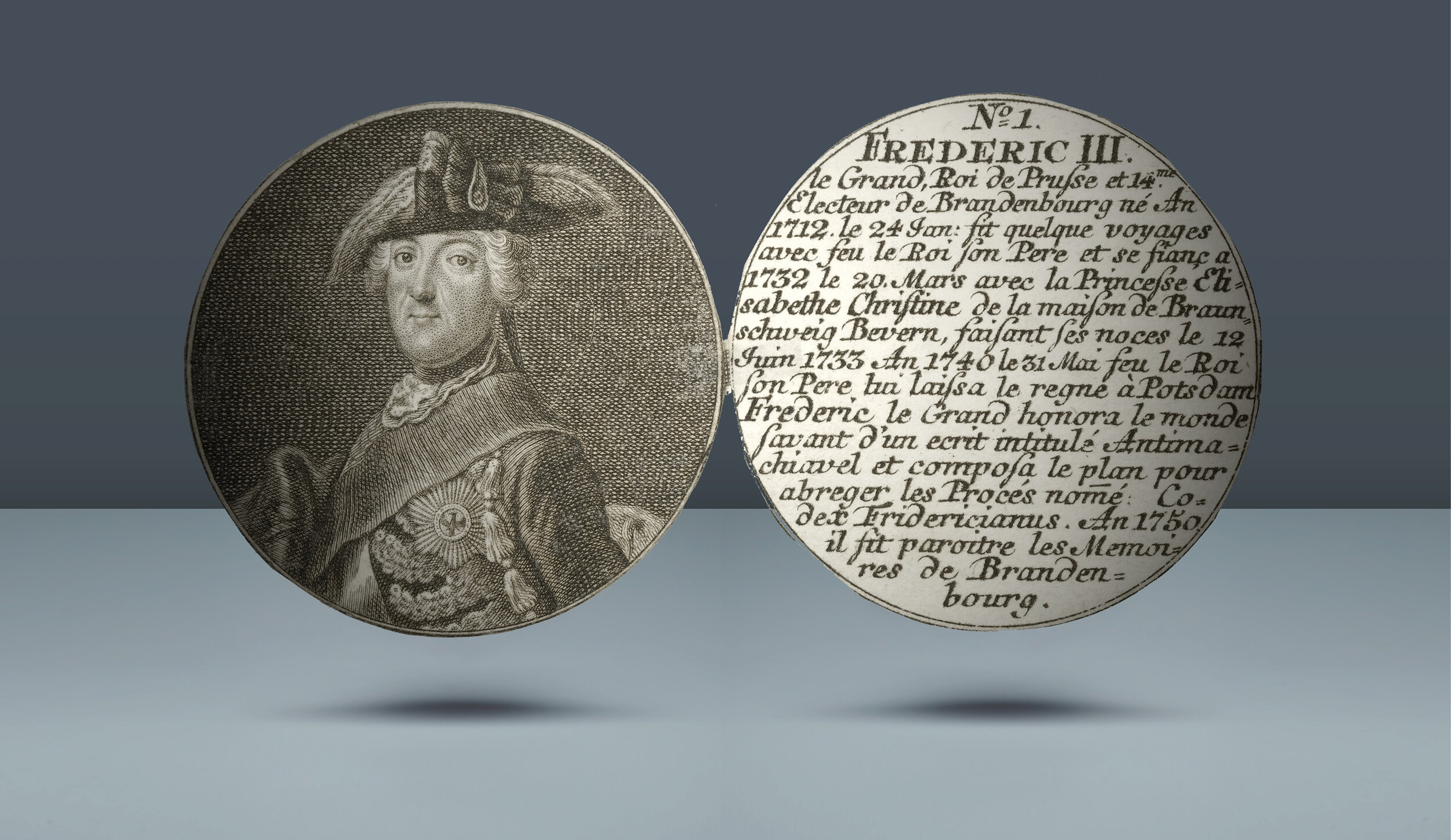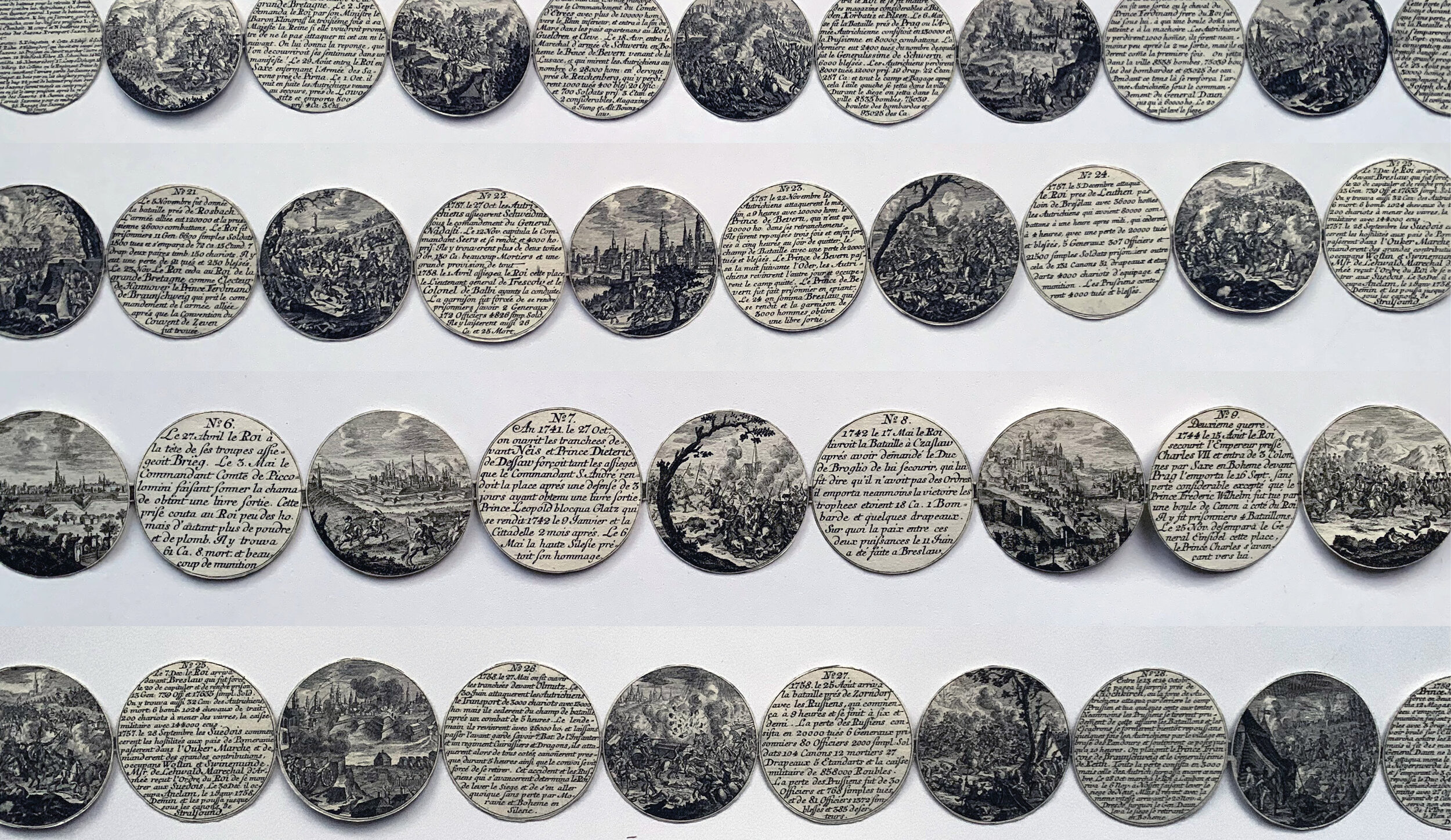Prussia, Frederick II, the Great. Designed by I. M. Mörikofer. 1740-1786 AD. Made in 1759








Prussia, Frederick II, the Great. Designed by I. M. Mörikofer. 1740-1786 AD. Made in 1759
AR Schraubtaler, 30.02g (49mm). Describes Frederick the Great and his three wars on 38 double sided sheets. Written in French. The outer shell shows a draped bust of Frederick facing left. The reverse shows a seated Historia holding a book and laying on the back of the god Kronos.
References: Old. 667 b; Preßler 466
Grade: Light iridescent toning on the outer part. Within, the paper tiles are all still bound together. Separate pieces in each outer part. Excellent condition. (wc1097)
Scroll down for more information about this coin.
These fascinating pieces are “coins” that can be separated into two parts and contain something inside whether it be a portrait of a loved one, story or precious item. They were extremely popular, particularly in Germany in the 1700 and 1800’s. The earliest known schraubtaler used coins from from 1486-1525. Many times, the coins used to construct the schraubtaler were from different cities and various dates but most were out of circulation. The artistry and stories encapsulated within the coins are fascinating. For example, this particular piece details the starvation that was took place in Germany in the year 1816. It also compares the year 1816/1817 to 1771 in Bavaria. This piece was made in Nurnberg, however, the majority of schraubtalers came out of Augsburg. These pieces reflected religious and political issues of the time.
Schraubtalers were given as a present, a commemorative gift for a wedding or baptism, or for distinguished honors. Sometimes they were given to the men and women in arranged marriages with the portrait of their future spouse enclosed. They also used it as packaging for precious items. For example, Queen Maria Theresia gave the bodyguard for her bedroom, half a ducat that she enclosed in a schraubtaler. The most interesting thing about a schraubtaler is undoubtedly the content. The earliest have engravings or oil portraits put straight on the inside of the talers.
